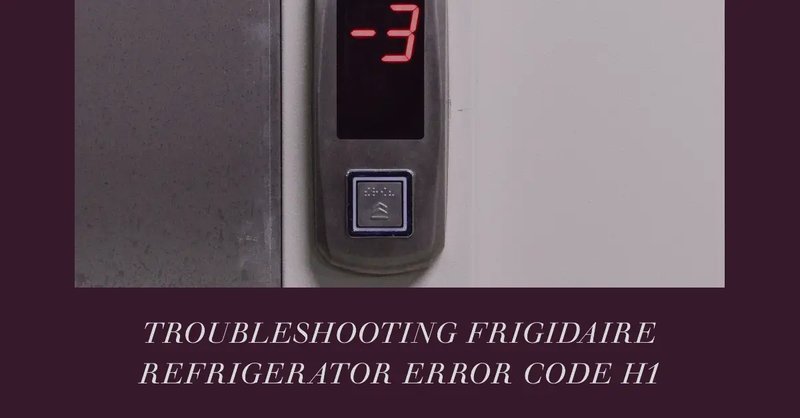
Frigidaire refrigerators are known for their reliability, but like any appliance, they can encounter issues. The Error Code E1 is a common message that owners might face. At its core, this code is an indication of a temperature sensor malfunction. Think of these sensors as the “thermometers” for your fridge. If the sensor isn’t working, it’s like trying to check the weather with a broken thermometer—frustrating and unreliable. But don’t worry, not all error codes are a sign of doom. Some issues are fixable with simple steps, while others might require the expertise of a professional. Let’s dive into when to call that technician.
Understanding Error Code E1
Error codes can often feel like a secret language that only technicians understand. However, the E1 code on your Frigidaire refrigerator alerts you to a specific problem—the temperature sensor isn’t communicating correctly with the control board. Imagine it like trying to make a call on a cell phone with no reception. The phone’s there, but the message isn’t getting through.
This breakdown in communication can be due to a faulty sensor, a loose connection, or even an issue with the control board itself. But here’s the kicker: without accurate sensor readings, your refrigerator can’t maintain the right temperature. This might mean your food isn’t kept as fresh as it should be, leading to spoilage. Not what you want from one of your kitchen’s most essential appliances, right?
You might be tempted to Google your way to a solution, and that’s fine for minor issues. But when it comes to electrical components and internal workings, a wrong move could complicate things further—or worse, void your warranty. Knowing when to call a professional can save you time, stress, and maybe even money in the long run.
Signs That It’s Time to Call a Technician
So, how do you know when it’s time to throw in the towel and call a technician? First things first, if you notice any unusual noises, such as buzzing or clicking sounds that weren’t there before, this might be a sign that the issue runs deeper than a simple sensor reading error.
Additionally, if you’ve attempted a basic reset—unplugging your fridge and plugging it back in—and the code persists, it’s a sign that the problem may require more than a simple DIY fix. Persistent error codes are often indicative of underlying issues that need a professional’s touch.
Thirdly, noticeable temperature fluctuations can be particularly telling. If your fridge can’t maintain a consistent temperature, not only could it affect your food, but it might also signal that the control board isn’t processing the sensor data correctly. At this point, calling a technician ensures that the root cause is identified and addressed properly.
What Can You Do Before Calling a Technician?
Before you pick up the phone, there are a couple of steps you can try. Start with the basics: ensure that your fridge is plugged in securely and receiving power. Sometimes, the fix is as simple as checking for a tripped circuit breaker.
Next, look at your fridge’s placement. If it’s tilted slightly, it might affect the sensor’s readings. Adjusting the leveling might solve the issue. Also, make sure your fridge isn’t overfilled; proper air circulation is crucial for temperature consistency and could prevent that error code from appearing.
Finally, if you’re comfortable with it, examine the temperature sensor and wiring for visible damage. However, if this involves removing panels, it’s safer to leave it to the experts. If everything checks out and the code still flashes, then it’s time to call in a professional.
Preventative Tips to Avoid Future Errors
After you’ve resolved the error code, or even before it happens, there are some things you can do to prevent similar issues. Regular maintenance is key—this means cleaning condenser coils, checking door seals, and ensuring the cooling fan is functioning properly. Think of it as giving your fridge a little TLC.
Another tip is to avoid blocking vents with food items. This ensures that air flows freely within the compartments, helping the temperature sensors maintain consistent readings. Be mindful of where your fridge is placed; it should have adequate space around it to breathe—no different from needing elbow room at a crowded dinner table.
Lastly, keep an eye on temperature settings. Extreme settings can put unnecessary strain on sensors. Use a recommended setting, usually around 37°F for the fridge and 0°F for the freezer, to keep your fridge running smoothly.
In conclusion, while Error Code E1 can seem daunting, understanding its implications and knowing the right steps to take can make all the difference. By following these guidelines, you’ll be better equipped to handle the situation, ensuring your fridge remains in top working condition—or knowing when to bring in the pros to keep your kitchen humming smoothly.
